訪談實錄
Interviews
訪談實錄
思想風雲在中山—國際漢學家訪談
「國際漢學家訪談」影片發佈會暨漢學座談
由國家圖書館與國立中山大學文學院教育部標竿計畫「跨文化漢學之島:國際漢學平台在中山」所合辦的「國際漢學家訪談」,2021年迄2022年,已邀請22位海內外深具影響力的漢學家及人文學者完成影音訪談,交流內容包括其學思歷程、研究生涯、學術著作、漢學觀點、海內外漢學研究經驗,乃至跨文化生活的分享等。
國立中山大學國際漢學平台,將於2023年8月1日起,每週二於平台YouTube頻道上映發佈一部訪談影片,敬請關注!
今特舉辦「『國際漢學家訪談』影片發佈會暨座談」,活動資訊如下:
■時間:2023年9月8日(週五)14:00-16:30
■地點:國家圖書館(臺北市中正區中山南路20號)藝文中心3樓「國際會議廳」
■議程:
14:00-14:30影片發佈儀式
14:30-15:30影片播放
15:30-16:30「危機時代與漢學回應」主題座談
本次活動,除了訪談影音發佈,並誠邀15位漢學家蒞臨參與「危機時代與漢學回應」主題座談,歡迎報名與會,領略學者的心路歷程與關懷視野,共同思索如何立足當代,以跨文化的動能開闢漢學新局。
欲參與者,敬請點選連結,完成報名:https://reurl.cc/Rzm5Ye
報名截止日:2023年8月25日(週五)24:00前。
本場活動將同步進行直播,連結如下 : https://www.youtube.com/watch?v=f-GOiGOXgUQ
楊儒賓 教授
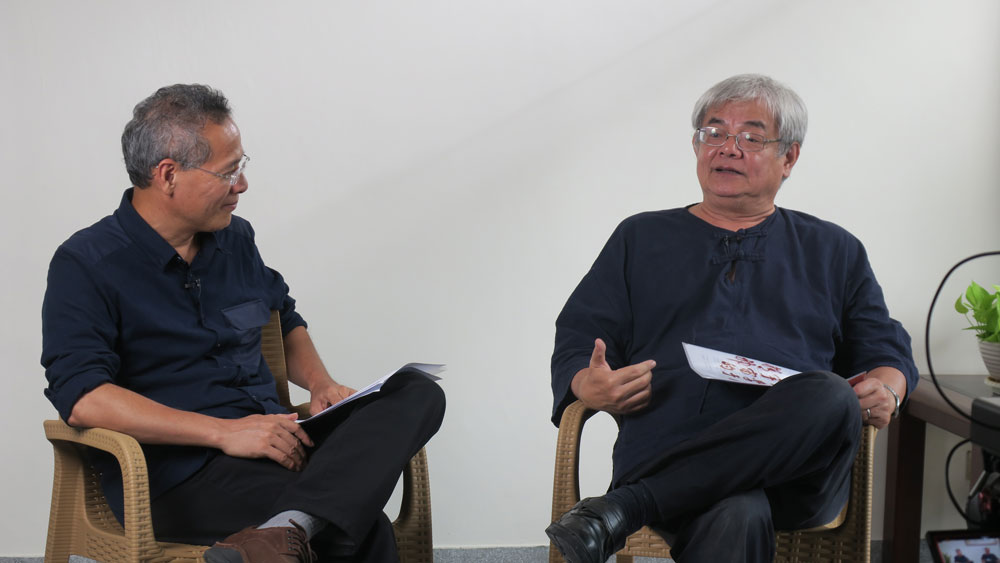
時間:2021.10.13 09:00-11:30
受訪者:楊儒賓 國立清華大學哲學研究所講座教授
訪問人:賴錫三 國立中山大學文學院院長
宋灝Mathias Obert 教授
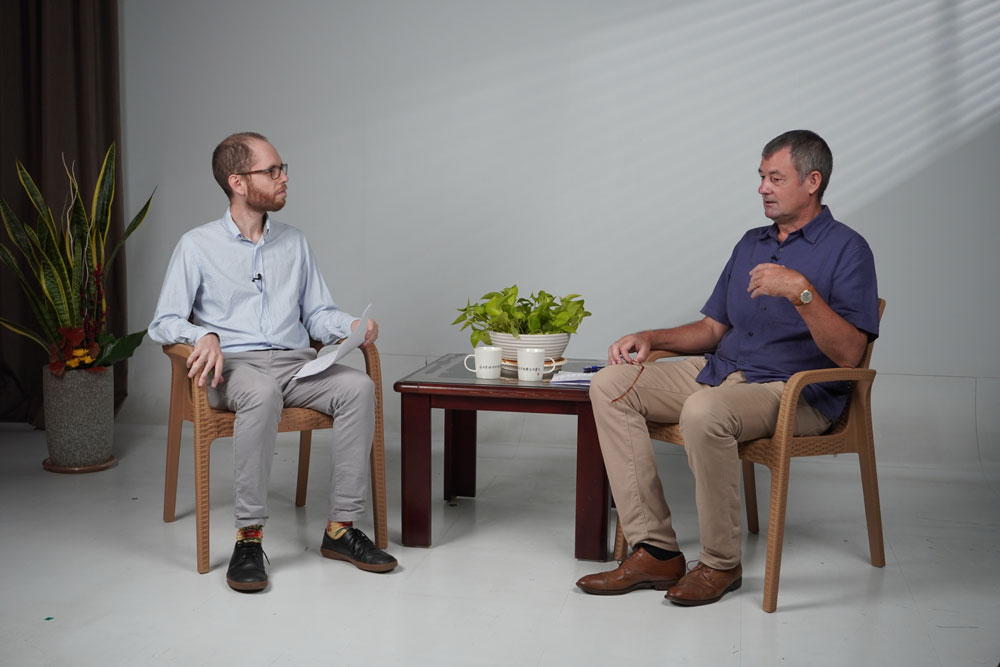
時間:2021.10.18 14:00-16:00
受訪者:宋 灝(Mathias Obert) 中山大學哲學所教授
訪問人:高長空(Héctor G. Castaño) 中山大學哲學所助理教授
賀安娟Ann Heylen 教授
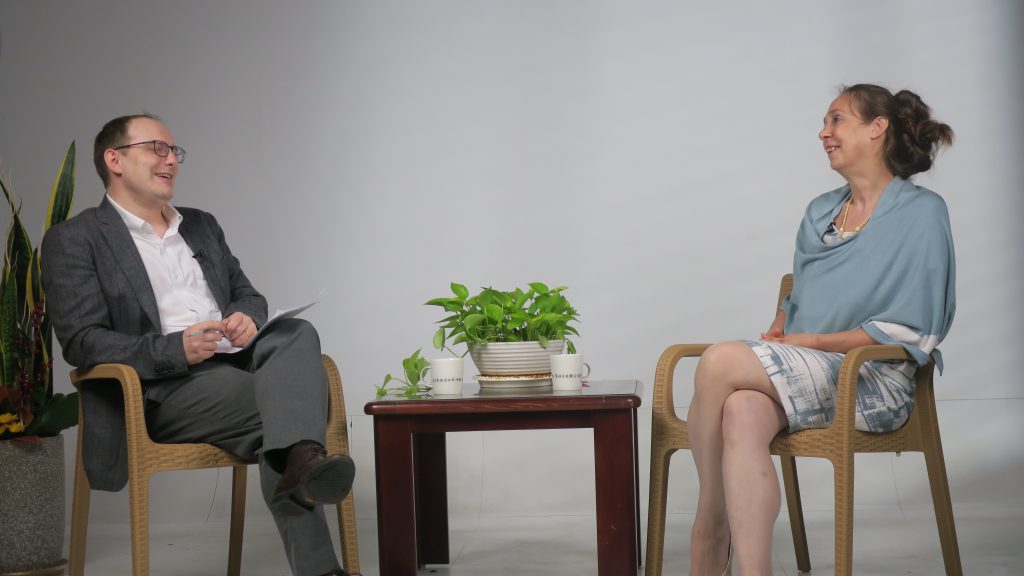
時間:2021.11.17 09:00-11:30
受訪者:賀安娟(Ann Heylen) 臺灣師範大學台灣語文學系教授
訪問人:莫加南(Mark McConaghy) 中山大學中國文學系助理教授
康特Hans-Rudolf Kantor 教授
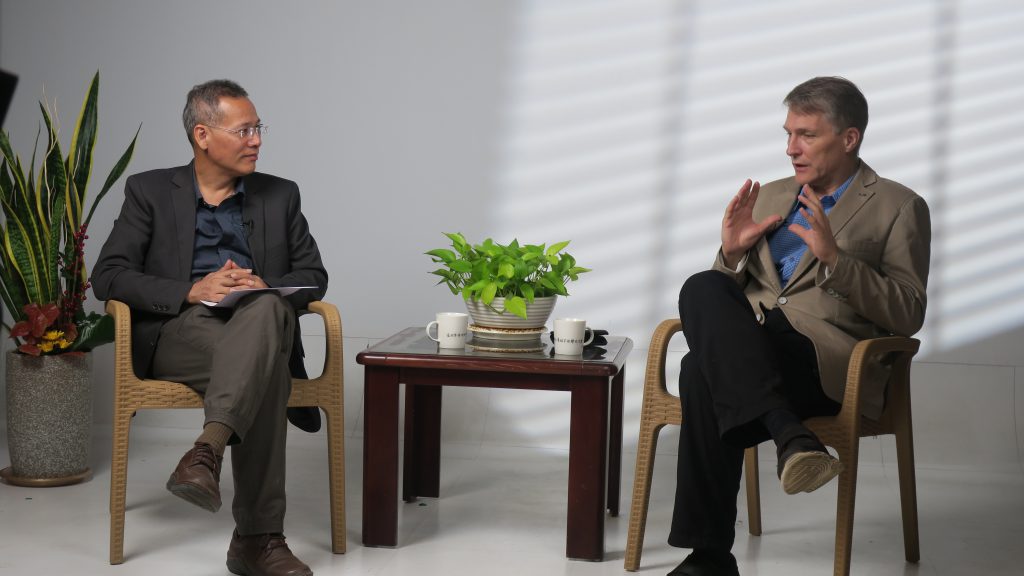
時間:2021.11.26 09:00-11:30
受訪者:康特(Hans-Rudolf Kantor) 華梵大學東方人文思想研究所教授
訪問人:賴錫三 國立中山大學文學院院長
鄭毓瑜 院士
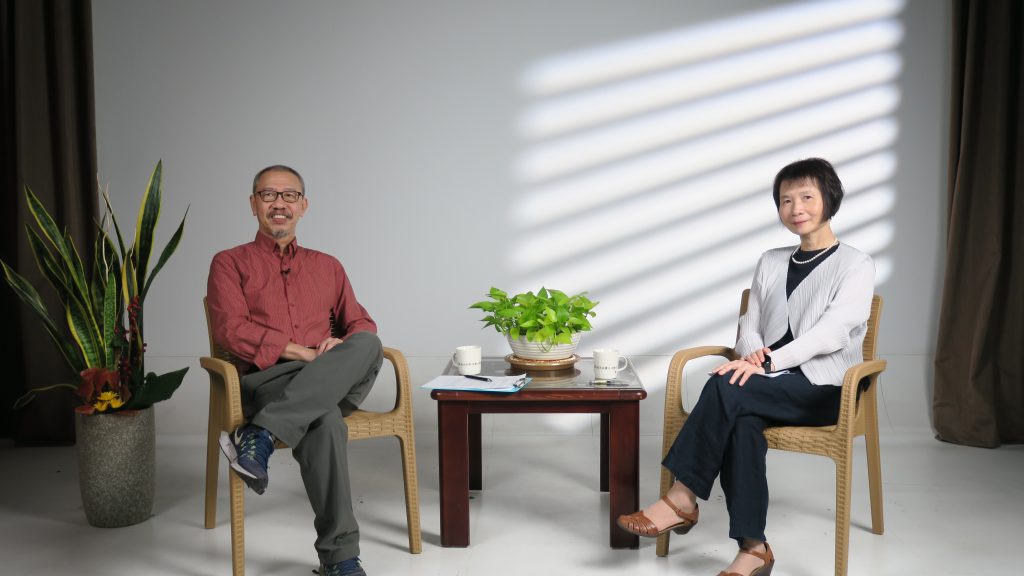
時間:2021.11.30 09:00-11:30
受訪者:鄭毓瑜 中央研究院院士、臺灣大學中國文學系講座教授
訪問人:張錦忠 中山大學外國語文學系副教授
李壬癸 院士
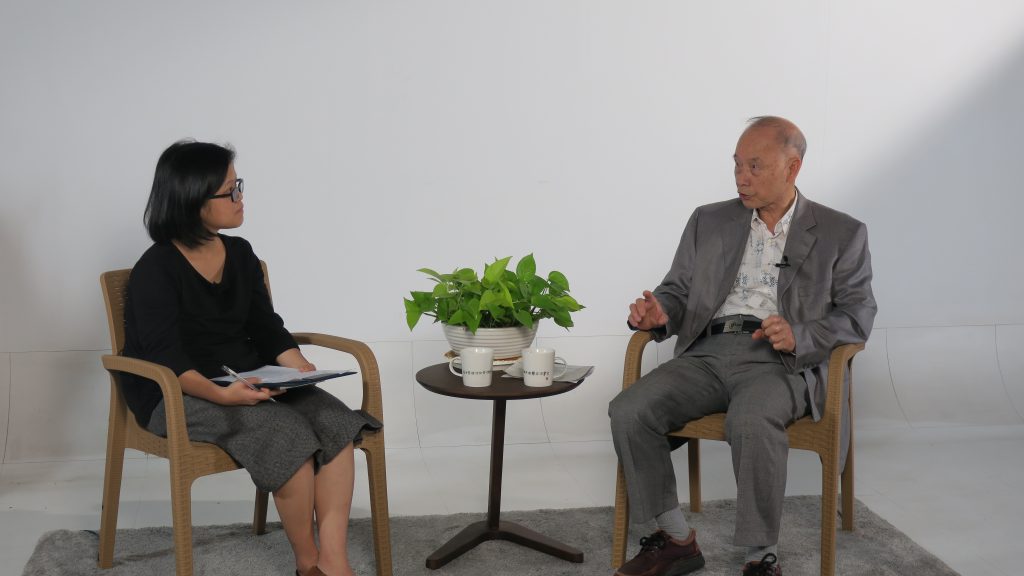
時間:2022.3.8 09:30-12:00
受訪者:李壬癸 中央研究院院士
訪問人:杜佳倫 中山大學中國文學系副教授
何乏筆Fabian Heubel 研究員
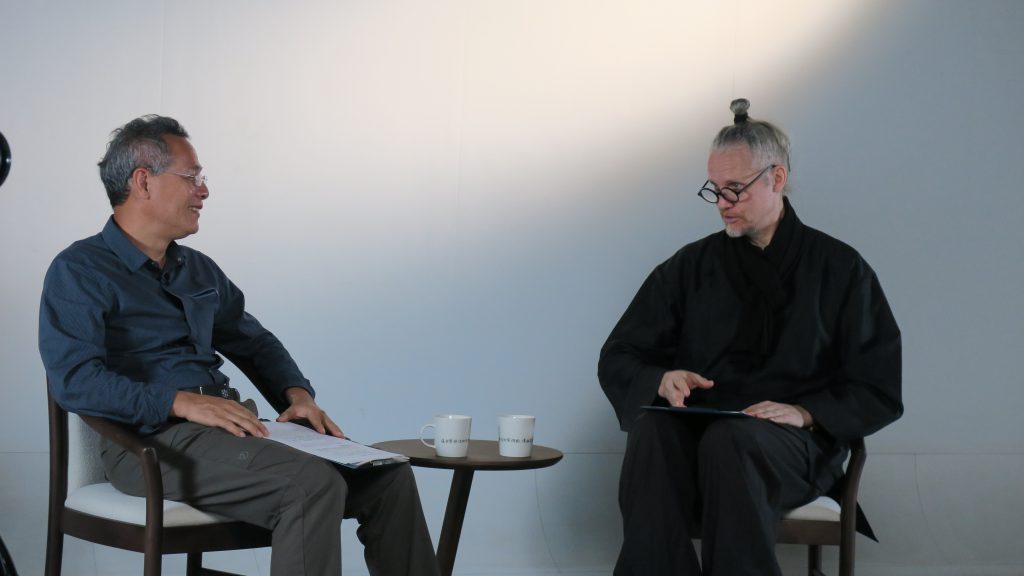
時間:2022.4.20 09:30-11:00
受訪者:何乏筆(Fabian Heubel) 中研院文哲所研究員
訪問人:賴錫三 中山大學文學院院長
何重誼Jean-Yves HEURTEBISE 教授
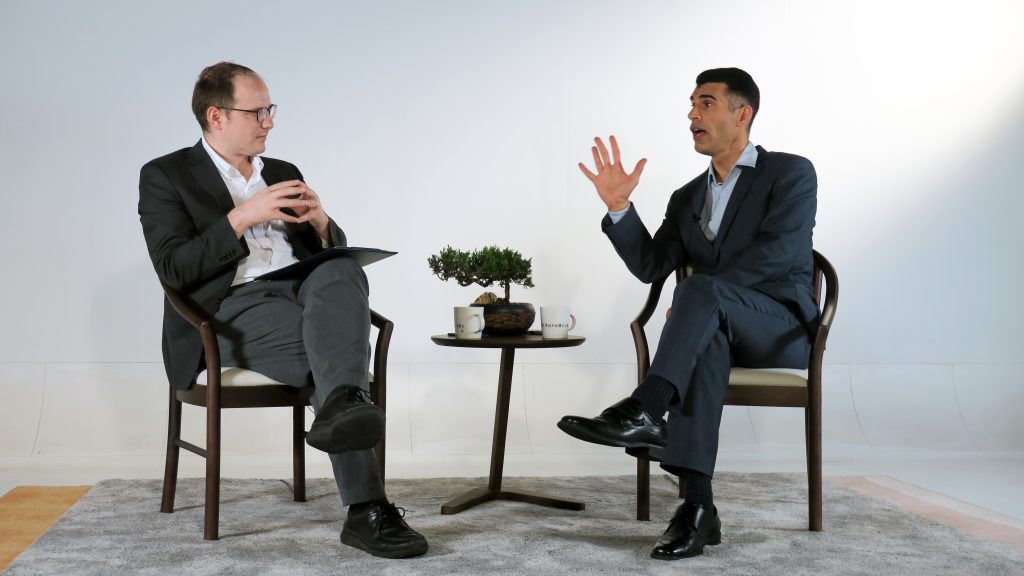
時間:2022.6.7 09:30-11:30
受訪者:何重誼(Jean-Yves HEURTEBISE) 輔仁大學法國語文學系副教授
訪問人:莫加南(Mark McConaghy) 中山大學中國文學系助理教授
鄧育仁 所長
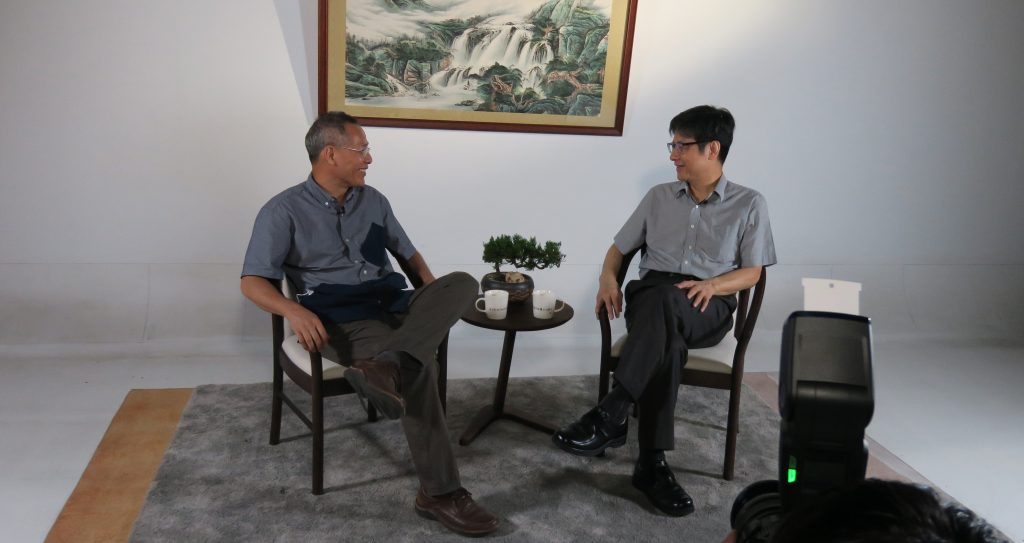
時間:2022.7.7 10:00-12:00
受訪者:鄧育仁 中央研究院歐美研究所所長
訪問人:賴錫三 中山大學文學院院長
彭小妍 研究員
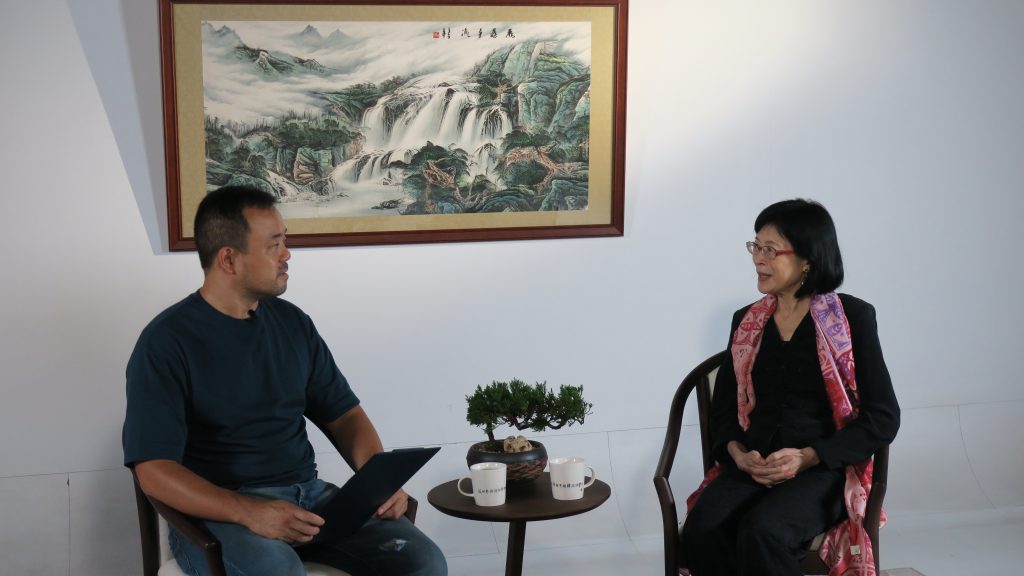
時間:2022.7.7 14:00-16:30
受訪者:彭小妍 中央研究院中國文哲研究所兼任研究員
訪問人:許仁豪 中山大學劇場藝術系副教授
劉紀蕙 主任
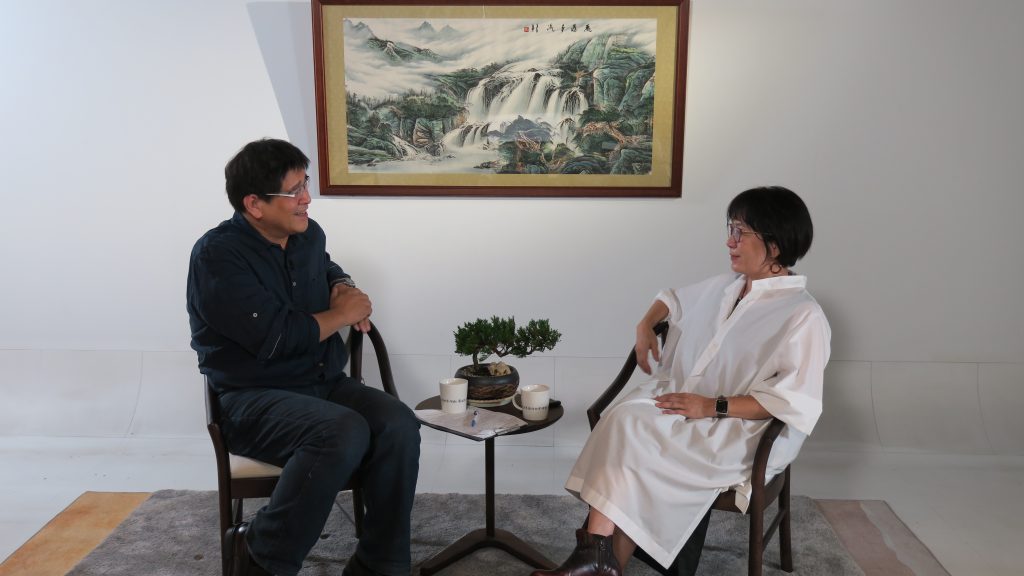
時間:2022.7.10 09:30-12:00
受訪者:劉紀蕙 陽明交通大學文化研究國際中心主任
訪問人:洪世謙 中山大學哲學所教授
林鎮國 教授
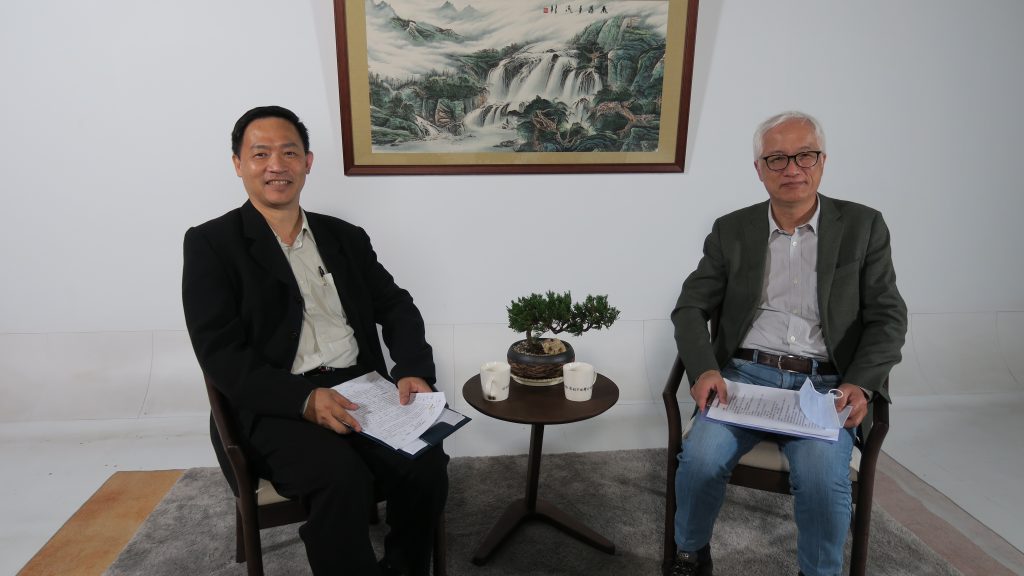
時間:2022.7.10 14:00-16:30
受訪者:林鎮國 國立政治大學哲學系榮譽教授
訪問人:越建東 中山大學哲學所教授
王德威 院士
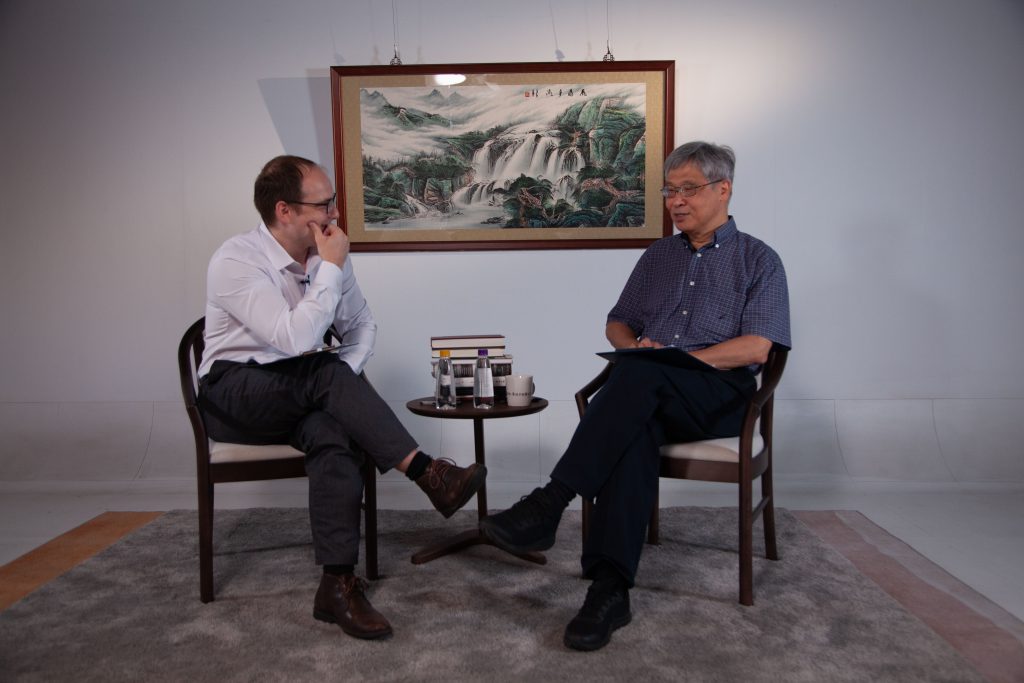
時間:2022.8.18 09:30-12:00
受訪者:王德威 中研院院士、哈佛大學東亞系與比較文學系Edward C. Henderson講座教授
訪問人:莫加南(Mark McConaghy) 中山大學中國文學系助理教授
林遠澤 教授
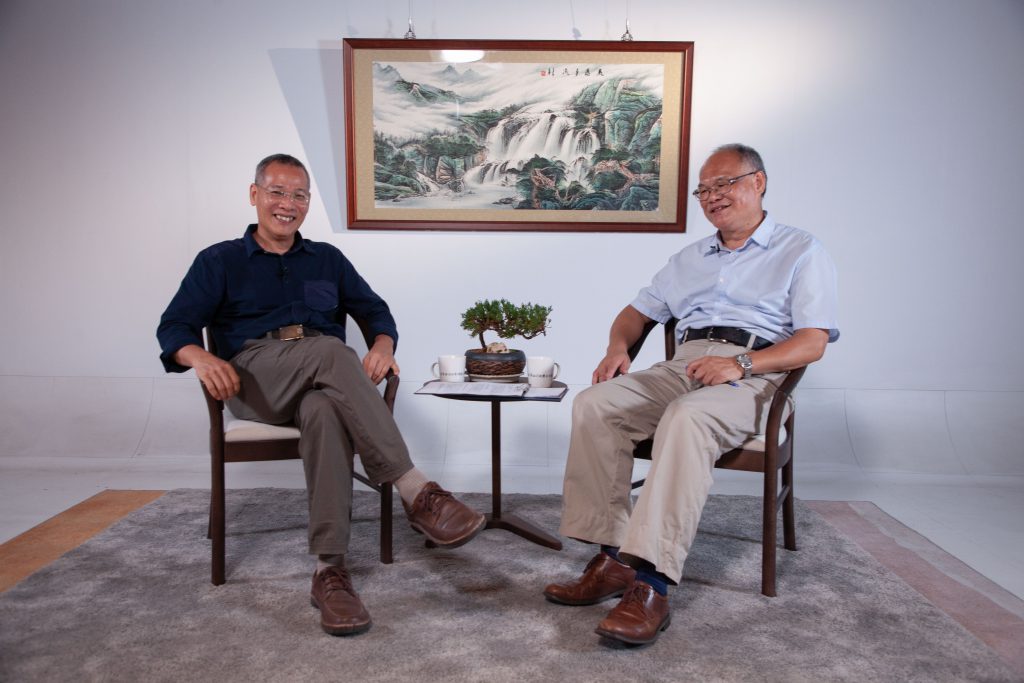
時間:2022.8.18 14:00-16:30
受訪者:林遠澤 政治大學哲學系教授
訪問人:賴錫三 中山大學文學院院長
張錦忠 教授
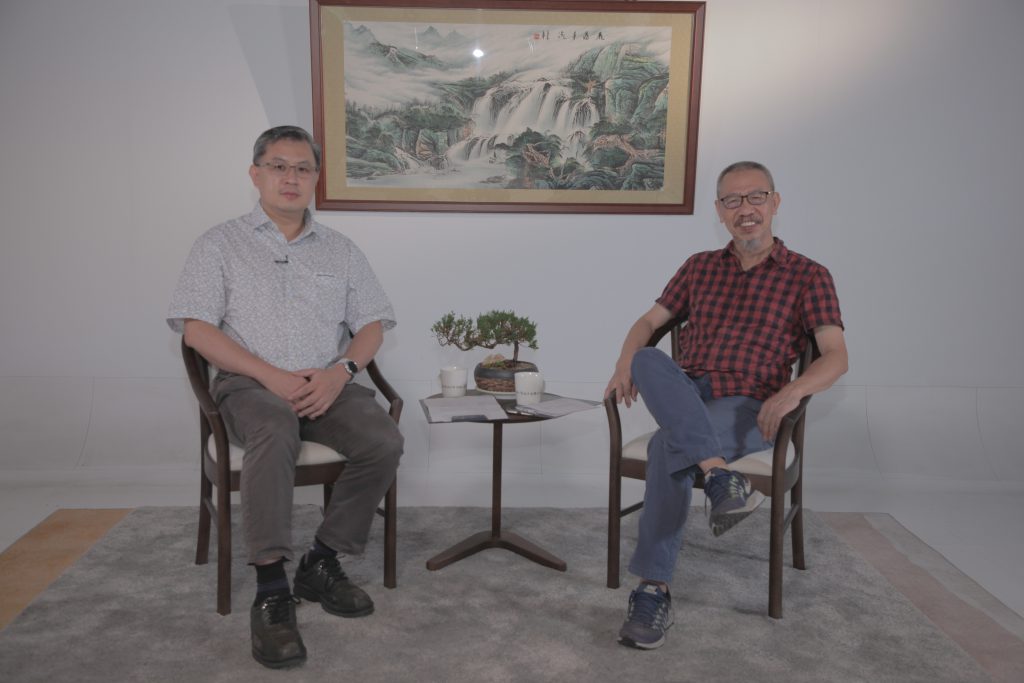
時間:2022.8.20 14:00-16:30
受訪者:張錦忠 中山大學外國語文學系教授
訪問人:高嘉謙 臺灣大學中國文學系副教授
康豹 Paul R. Katz 研究員
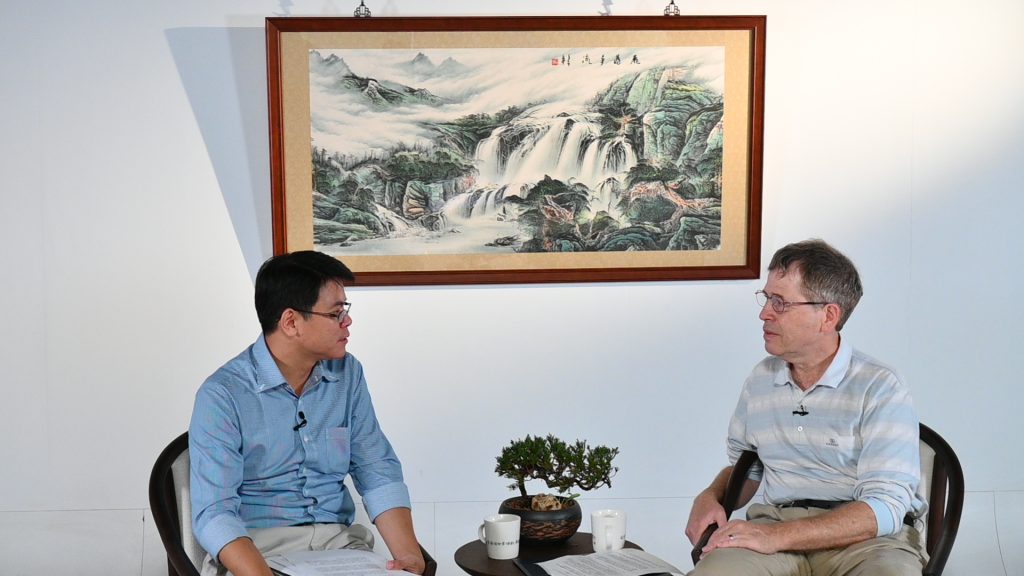
時間:2022.9.21 14:00-16:30
受訪者:康豹(Paul R. Katz) 中央研究院近史所特聘研究員
訪問人:羅景文 中山大學中國文學系系主任
傅可恩 P. Kerim Friedman 教授
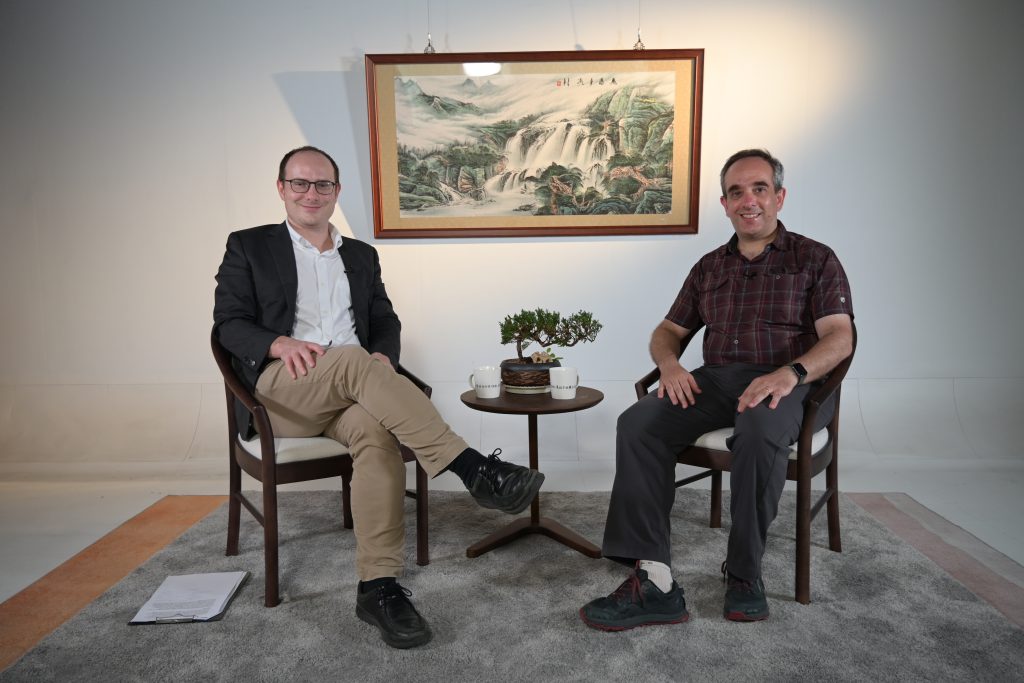
時間:2022.9.26 14:00-16:30
受訪者:傅可恩(P. Kerim Friedman) 東華大學族群關係與文化學系教授
訪問人:莫加南(Mark McConaghy) 中山大學中國文學系助理教授
佐藤將之 教授
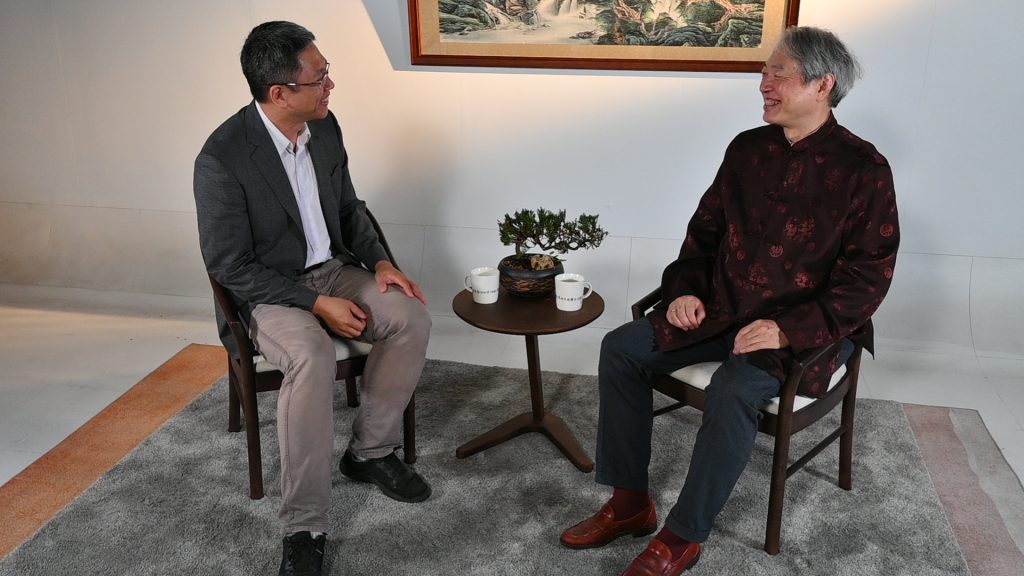
時間:2022.9.29 14:00-16:00
受訪者:佐藤將之 臺灣大學哲學系教授
訪問人:黃冠雲 中山大學中國文學系副教授
馬愷之 Kai Marchal 教授
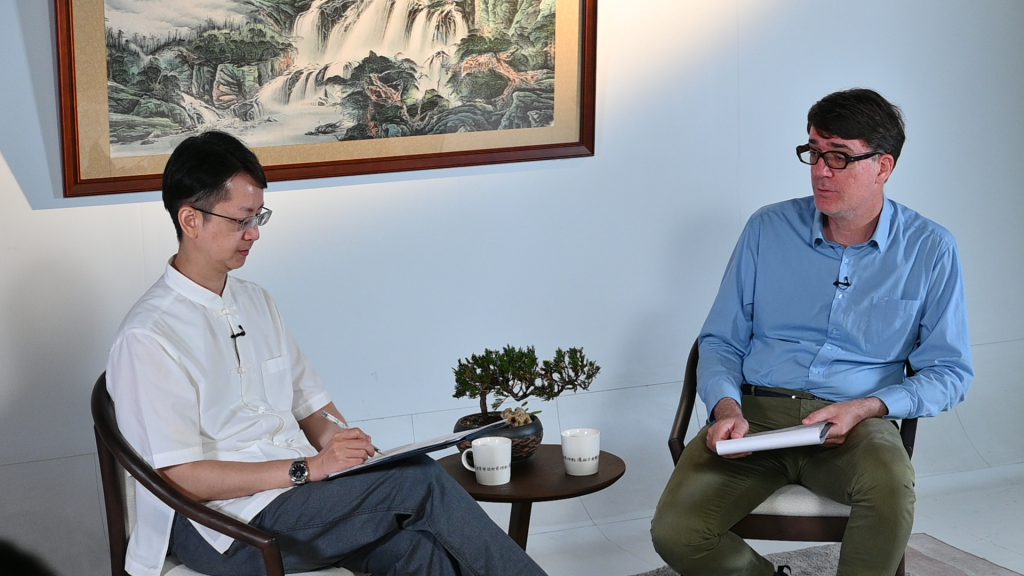
時間:2022.9.30 09:30-12:00
受訪者:馬愷之 Kai Marchal 政治大學哲學系副教授
訪問人:吳孟謙 中山大學中國文學系副教授
戴卡琳 Carine Defoort 教授
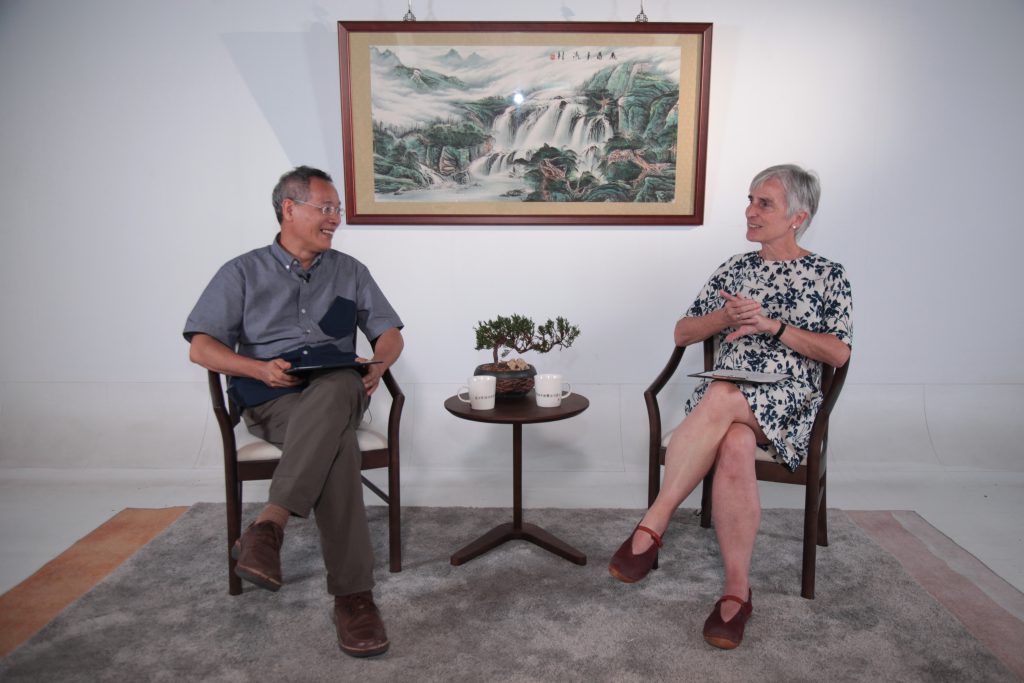
時間:2022.11.16 14:00-16:00
受訪者:戴卡琳 Carine Defoort 比利時魯汶大學漢學系教授
訪問人:賴錫三 中山大學文學院院長
郭靜云 Olga Gorodetskaya 教授
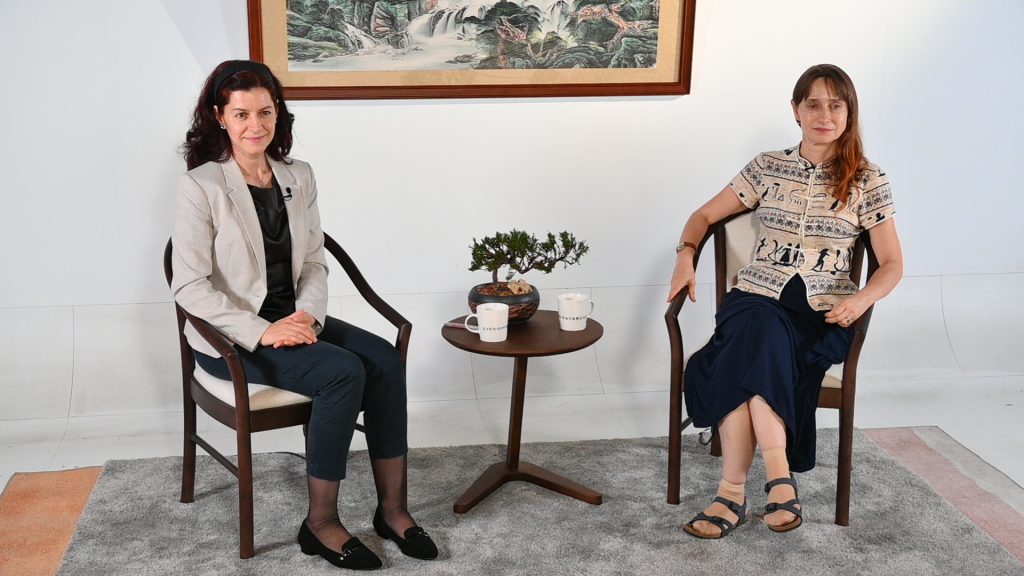
時間:2022.11.18 14:00-16:00
受訪者:郭靜云 Olga Gorodetskaya 中正大學歷史系教授
訪問人:謝薇娜 Severina Angelova Balabanova 中山大學中國文學系助理教授
任博克 Brook Ziporyn 教授
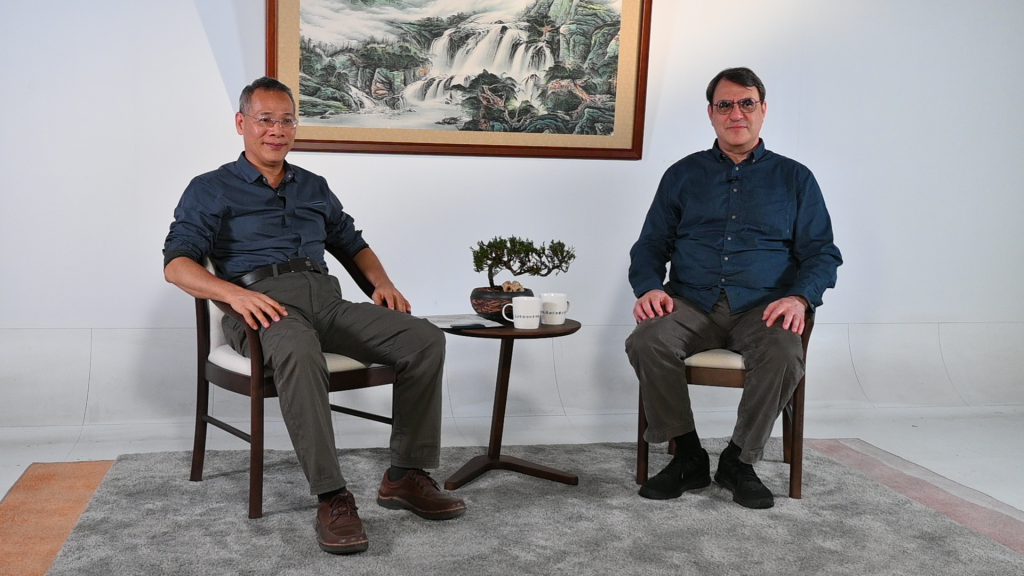
時間:2022.12.20 13:00-16:00
受訪者:任博克 Brook Ziporyn 芝加哥大學神學院教授
訪問人:賴錫三 中山大學文學院院長
羅亞娜 Jana S. Rošker 教授
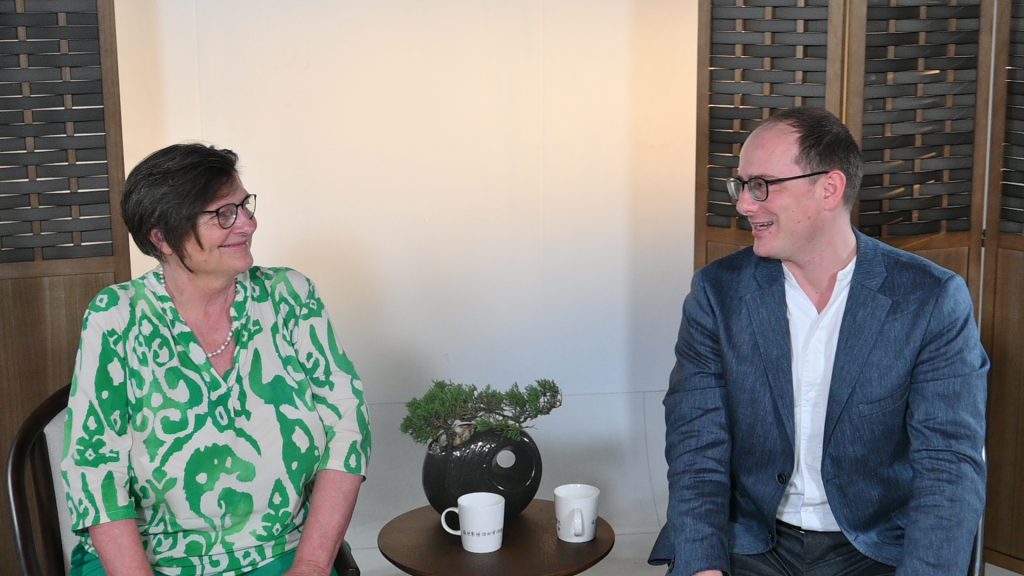
時間:2023.08.30 10:00-12:00
受訪者:羅亞娜(Jana S. Rošker) 斯洛維尼亞盧布爾雅那大學
訪問人:莫加南(Mark McConaghy) 中山大學中國文學系副教授
斯洛維尼亞漢學第一人 羅亞娜教授訪談錄
賴奕瑋/中山大學中國文學系碩士
「我到今天從來沒後悔」。
訪談的一開始,羅亞娜教授侃侃而談她與三位香港華人在倫敦街頭相遇的故事,那是17歲在倫敦的暑期英文課程。與街頭販賣冰淇淋的香港人偶然的相遇,也讓斯洛維尼亞的少女開始深入認識中華文化。在租屋處搭伙煮中國菜、第一次學習如何用筷子吃飯,香港朋友的簡易漢字課,讓年少的羅亞娜教授對一個來自東方異地的文化深深著迷。「我很早就開始對中國產生興趣,只不過那個時候我不知道可以學漢學」。在那還是南斯拉夫紅色天空下的斯洛維尼亞,學習與中國有關的一切知識卻格外的缺乏,只有語言課程。由於祖母的奧地利身份,從小深諳德語的羅亞娜教授發現,中東歐周遭只有維也納大學有漢學系,維也納就成了開啟她學術生涯的優勝美地。
授予獎學金,幾乎是來自歐美地區的漢學家最初可以一窺中華世界面貌的原因,而羅亞娜教授也因此前往了中國北京語言大學,20歲第一次來到後毛澤東時期的中國。是年1980,鄧小平上台不久,中國正進入改革開放、文化熱。「我真的很喜歡那個時候的中國,那時候的中國跟現在真的很不一樣!」,羅亞娜教授不斷重複著,中國人民的開放著實讓她驚豔,然而第一次踏上臺灣的土地,則是在拿到博士後得到漢學研究中心補助的1992年。教授回憶起九零年代的臺北,她說其實沒有太大的改變,臺灣人還是一樣的熱情開放,國家圖書館漢學研究中心數度的慷慨補助與豐沛的資源,讓教授直呼國圖是她的第二個家。
羅亞娜教授回顧個人的學思歷程,她說她的漢學研究是從20世紀中國的無政府主義文學開始出發,但也發現了中國無政府主義與道家思想的關聯,隨後遁入了研究中國哲學的路徑。在沒有太多漢學資源的斯洛維尼亞,羅教授記得1982當年在山東曲阜孔廟與同為研究東亞的斯洛維尼亞學者的約定,在1996年和兩位做日本研究與中國歷史研究的同事成立亞洲學系。即使羅教授說到,成立這個系所沒有想像中的困難,更困難的是要在歐洲進行研究中國哲學本身所帶來的困境,即不被歐洲哲學家所承認,多數的哲學家僅關注古典中文文本,而不太關心晚近中國哲學的發展。但羅教授關注到了新儒家,新儒家試圖透過中國思想與當代西方思潮交融的跨文化策略來回應當代華文世界的處境,也影響到了教授近期思考一種不斷變動的「揚棄(abheben)」方法來回應當代全球化下文化交融的現象。
受影響新儒家思想的羅亞娜教授談及,影響她至深的一位新儒家學者就是去年甫辭世的李澤厚先生。千禧年初,亞娜教授開始對當代中國哲學產生興趣,在書寫《求道》(Search for Doing)的過程中讀到李澤厚先生的著作,教授認為其著作中的創造性轉化特別濃厚,深具啟發。後來,2008年《求道》在香港中文大學出版社出版後,認識了漢學家安樂哲(Roger Ames)。在安樂哲的邀請下,羅教授到了夏威夷發表關於李澤厚思想的論文,而論文中對李澤厚思想的深刻批判讓李澤厚本人刮目相看。在研討會上的結緣,讓羅教授發展出了一部關於李澤厚思想中的倫理問題的著作,在論學態度的契合與個人情誼,於公於私間李澤厚先生也成為了她人生中一位重要的老師。最後,身為女性漢學家,羅亞娜教授也關注當代的臺灣女性漢學學者如何思考儒家的議題,因而以吳慧齡與林月惠等學者為例。過往的新儒家並不關注女性議題,在性別多元開放的臺灣社會,重新思考中國哲學中的女性是極為重要的。羅亞娜教授,最後也勉勵國際漢學平台投入更多關於中華女性哲學的相關研究。
陸敬思 Christopher Lupke 教授

時間:2023.10.26 14:00-16:00
受訪者:陸敬思(Christopher Lupke) 加拿大亞伯達大學東亞研究學系教授
訪問人:莫加南(Mark McConaghy) 中山大學中國文學系副教授
石井剛 ISHII Tsuyoshi 教授
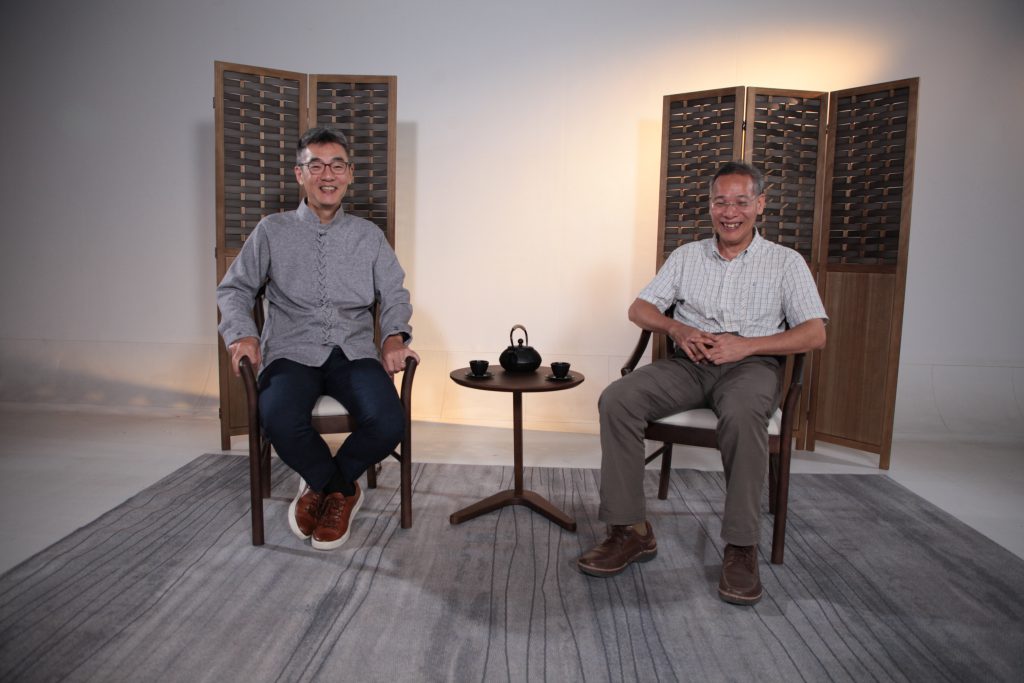
時間:2023.11.01 15:00-17:00
受訪者:石井剛(ISHII Tsuyoshi) 日本東京大學大學院綜合文化研究科暨東亞藝文書院院長
訪問人:賴錫三 中山大學文學院院長
奚密 Michelle Yeh 教授
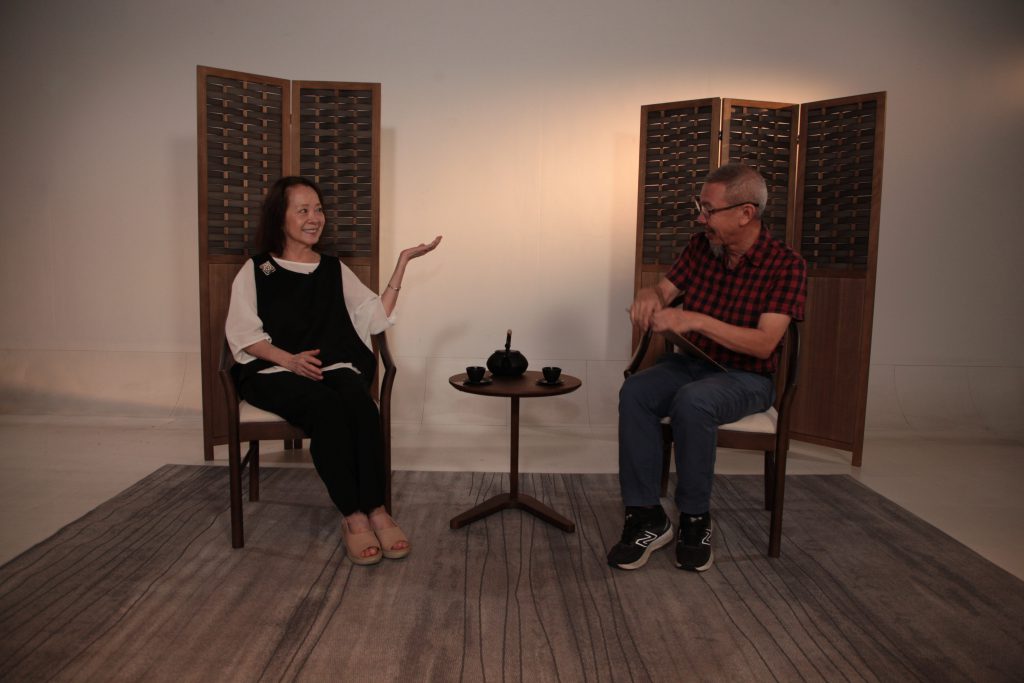
時間:2023.11.09 14:00-16:00
受訪者:奚密(Michelle Yeh) 美國加州大學戴維斯分校東亞語文學系教授
訪問人:張錦忠(TEE Kim-Tong) 中山大學外國語文學系退休教授兼約聘研究員
李豐楙 教授
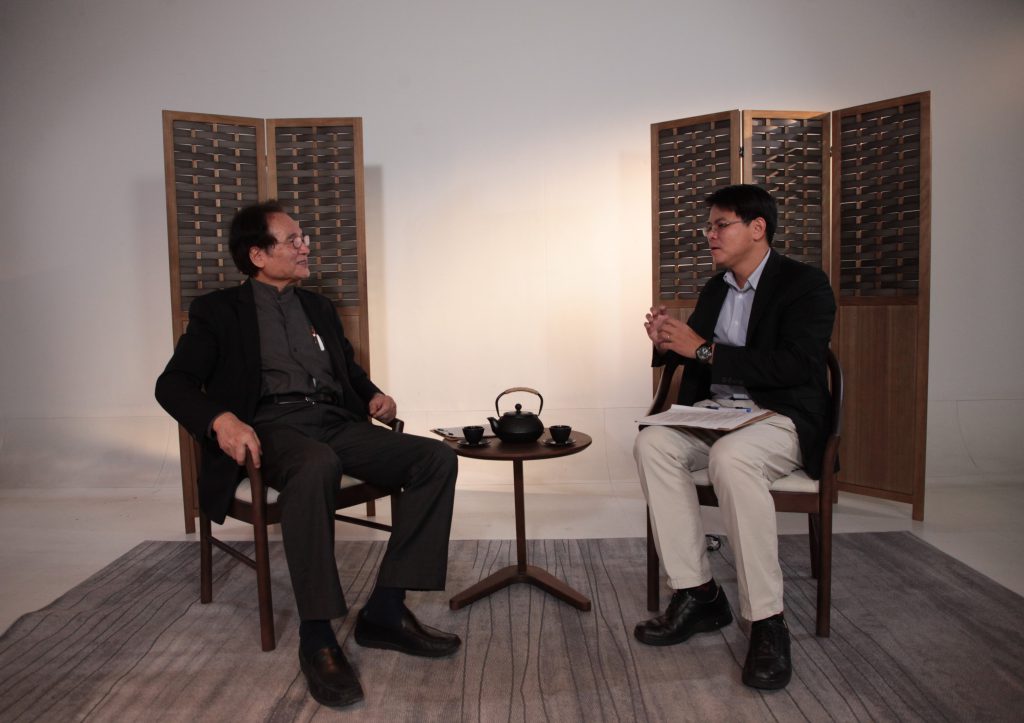
時間:2023.12.07 14:00-16:00
受訪者:李豐楙 國立政治大學華人宗教研究中心名譽講座教授暨中研院院士
訪問人:羅景文 中山大學中國文學系副教授兼系主任
王汎森 院士
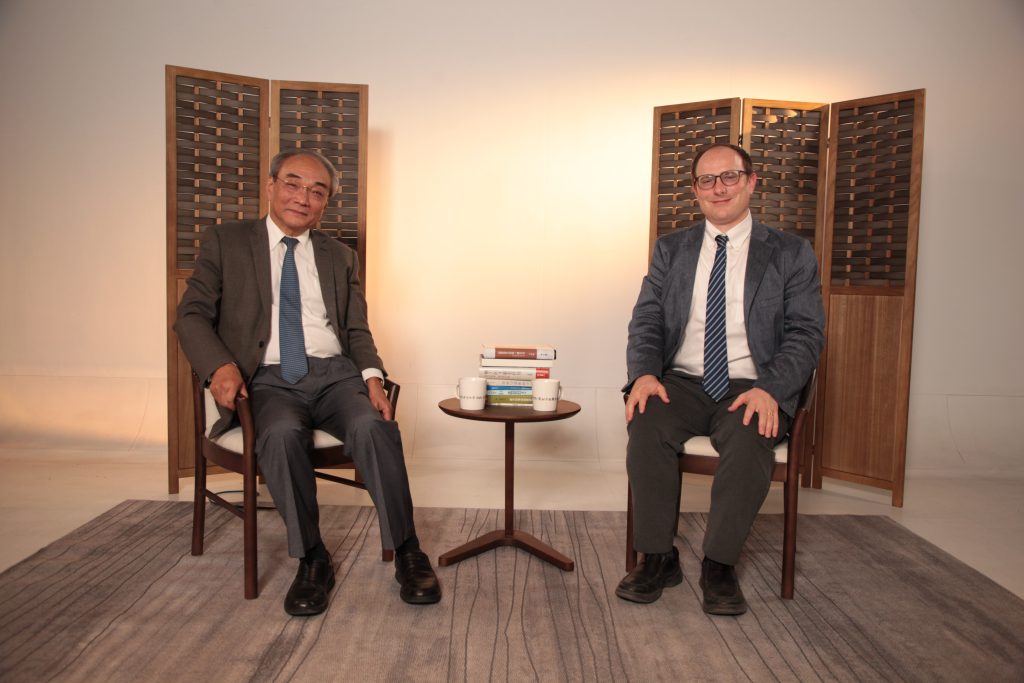
時間:2024.03.02 14:00-16:00
受訪者:王汎森 中央研究院院士暨臺灣綜合大學系統主席
訪問人:莫加南(Mark Frederick McConaghy) 國立中山大學中國文學系副教授兼人文中心主任
發揚道統:孫中山時代展
Renovating the Way : Sun Yat-sen and his Era
發起緣由
為了標誌孫中山對中華民國建國過程的貢獻,
中山圖書館報導_展覽預告《發揚道統:孫中山時代展》即將登場!
展覽簡介
文字撰述:國立中山大學中國文學系莫加南(Mark McConaghy)助理教授
Who was Sun Yat-sen (1866-1925), what was his revolution, and are the ideals of his era still relevant to 2022 Taiwan? This exhibit utilizes calligraphic works, photographs, newspaper clippings, material objects, and art works from the late Qing and early Republican eras to to engage viewers in a multi-media exploration of the process of modern transformation that gave birth to the Republic of China. In particular, the exhibit focuses on the ideals that were mobilized by Sun in imagining what this new Republic could be for the Chinese world.
孫中山 (1866-1925) 是誰?何謂他的革命?而其理念在當今的台灣還有意義嗎?本展覽以晚清民初的書法、照片、報紙、藝術品等不同媒介的珍稀文物,引領觀覽者思考孫文在想像、孕育中華民國時所展現的價值體系和文化理念,探索中華民國的現代轉型如何誕生。
Sun was a polyglot figure, born to a Cantonese family of modest means at the southern edges of the old Qing imperium. From an early age he was in contact with foreign languages and cultures. He would spend an extensive period of the first four decades of his life in Hawaii and British Hong Kong, where he studied Western medicine, became proficient in English, converted to Christianity, and agitated for Republicanism in China, inspired by a deep desire to overthrow what he understood to be a lethargic and unresponsive imperial system.
出生於大清國境之南廣州民間家庭的孫文,自年少時期即耳濡目染異國語言文化,曾旅居往來檀香山與英屬香港近四十年,學習西醫、熟稔英文,甚至皈依基督教,並深信帝制王朝已淪為腐策沉痾,無法回應現代世界而應予汰換,從而主張「民國」作為中華世界政治制度,取代原有的政治體制。
Yet despite these many foreign influences, Sun also had an extensive training early in his life in the Confucian classics, being of the same generation of thinkers such as Kang Youwei (1858-1927), Liang Qichao (1873-1929), and Tan Sitong (1865-1898). These were new style literati for whom modernity did not mean a complete abandonment of the traditional Chinese life world, but its gradual renovation. Sun’s political path thus came to represent a more moderate, but also perhaps more sustainable, vision of Chinese modernity than those offered later by May Fourth iconoclasts and revolutionary Marxists. This exhibit is thus entitled “Renovating the Way,” which was an expression used by Sun himself to describe the goals of his revolution: to enable the broad humanistic ethos of the Chinese world to express itself in modern and progressive terms, finding a balance between preservation and innovation in the 20th century.
儘管孫文領受西方思潮洗禮,然其早年亦受過紮實的傳統儒家教育,與之同代的知識份子有康有為(1858-1927)、梁啟超(1873-1929)、譚嗣同(1865-1898)等。這群新式儒紳認為:中華世界的「現代性」並不等於徹底揚棄原有傳統社會的精神,而是一漸進式的革新。其中,與五四時期的反傳統主義者或稍晚的馬克思主義革命者相比,孫文的政治主張提供更溫和、更具延續性的現代性轉型路線。據此,本展覽以「發揚道統 」為題,即是採用孫文自身說法來揭櫫革命目的:如何在現代歷史的進步脈絡下彰顯中華世界的人道傳統,於文化賡續與創新之間取得平衡。
Sun’s vision of modernity also had tremendous influence in early 20th century Taiwan, then enduring Japanese colonial occupation. Members of the anti-Japanese colonial opposition such as Chiang Wei-shui, Lin Hsien-tang, and Lian Heng turned to modern Chinese nationalist thought for inspiration regarding how to think nation, modernity, and enlightenment. Sun’s revolution is therefore internal to the history of Taiwan itself, being a critical resource through which Taiwanese intellectuals of the colonial period thought self, collectivity, and futurity.
此外,孫文現代思潮的影響也擴及日治時期的台灣。反對殖民主義的台灣知識份子群體,如蔣渭水(1890-1931)、林獻堂(1881-1956)與連橫(1878-1936)等對如何思考國家、現代性與啟蒙等一系列關鍵概念,均接受現代中華民族主義思想。據此而言,孫文的革命思潮內化於台灣歷史,是台灣日治時期知識分子思考自我、群體與未來的重要思想資源。
The exhibit is thus organized around three major themes: the international, Sino, and local dimensions of Sun’s revolution. It is hoped that viewers will use the exhibition of these rare historical materials as a jumping off point for their own reflections on the meaning of Sun’s revolution and the ideals of the Republic it fostered, a state which continues to thrive on the island of Taiwan today. Has the renovation of the Way been completed? What elements of the humanistic tradition of the Sino-world have been lost in our rush towards modernity? What work is left to be done as we seek to balance our Sino-cultural roots with transcultural internationalization?
本展覽以孫文的國際性、中華性與本土性為主軸而開展,希冀透過這三個面向,引領觀者思考孫文暨其革命歷史。尤其,以孫中山為首打造的民國共和體制,在兩岸分治後仍存續於東南一隅的台灣,這讓人不禁思索:道統的重構是否在島嶼已隱然成型?平心思問,在邁向當代,著眼跨文化、國際化的過程中,我們丟失或存續何種中華傳統裡的要素?如果維繫固有的文化基礎仍是未竟之業,究竟如何實踐?
本展覽邀請各位與我們一起思考這些問題。
主辦單位: 國立中山大學文學院、國立中山大學圖書與資訊處、國立清華大學文物館、國立清華大學圖書館、教育部標竿計畫──跨文化漢學之島:國際漢學平台在中山
協辦單位:國父紀念館、國立中山大學中國文學系
孫文的國際性及世界地圖編排
Sun Yat-sen was born in 1866 in Cuiheng village in Guangdong province, forty miles north of Macau. He grew up on the southern reaches of the Qing dynasty precisely at a time when the empire was being assailed by foreign powers. With their immense technological superiority in the fields of transport, armaments, and industrial production, the Western powers forced the Qing state to open up commercially to the world, founding foreign-controlled treaty ports along China’s eastern coastline throughout the later part of the 19th century, and turning Hong Kong into a British colony in 1841. The Qing state was thus forced to enter, on unequal terms, a global imperialist system controlled by Western capitalist powers. Near the end of the 20th century, Japan also began exerting imperialist force against China, resulting in the Sino-Japanese war and the ceding of Taiwan to Japan in 1895.
孫中山,本名文,號逸仙。大清同治五年(1866年),出生於廣東省香山縣翠亨村,相當於澳門以北四十公里左右。其在大清國反覆遭受西方列強侵擾的時代裡,成長於大清國南緣。列強在交通、軍事和工業上佔優勢,逼迫王朝開港通商,在中國沿海地區建立許多通商口岸,並於1841年割讓香港予英國,作為其在遠東地區的殖民地。在軍事壓力下,屈居弱勢的大清國被迫進入西方列強所控制的世界帝國體系。到了十九世紀末,日本也開始對中國採取軍事行動,進而引發1894年甲午戰爭,台灣與澎湖隨後割讓給日本。
Due to the presence of the treaty ports, which extended from Tianjin to Shanghai to Canton, a new coastal culture emerged in China, defined by Western commercial practices, institutions, and laws, in which Chinese merchants could thrive as intermediaries working between foreign firms and the Chinese public. Translingual and transcultural practices abound, as the treaty ports saw the importation of new languages, ideas, and educational initiatives, serving as a gateway for young Chinese to experience the larger world, often via commercial and educational networks that stretched from the Nanyang to the Americas. According to Sun biographer Marie-claire Bergère, what emerged along the Chinese coast during these decades was a “Blue China that was the color of the ocean, open, cosmopolitan, enterprising, and rich with boundless energy” (415), which could be contrasted with the “mud-colored, Yellow China that sheltered by its Great Wall, perpetuated a rural and bureaucratic tradition”(415).
從天津、上海到廣州,通商口岸遍佈中國沿海地區,並出現一種新的海洋文化。此一文化以西方的商業交易、貿易制度與涉外律法為主,華人則在其中扮演重要的中介,促使外國企業與在地社會往來, 新的語言、概念和教育制度也被引進中國。可說,通商口岸正是敞向世界的大門,提供重要的交流管道,而年輕的華人便時常輾轉南洋與美洲,藉由貿易和教育網絡走向世界。誠如孫中山傳記作者白吉爾(Marie-claire Bergère, 1933-)的說法,在這個時代,沿海地區出現一種「開放性、世界性、有野心的,有無限動力的中國,此中國即為海洋的中國、藍色的中國」,並可與「黃色的、黃土的中國」相比,後者是「被長城保護的,保有一種官僚與農業的傳統」。
Sun was a product of this coastal, metropolitan China. His family’s socio-economic position meant that the traditional pathway for social mobility open to lineages of more generous means- the civil service examination and a move back into the inland empire as a bureaucrat and servant of the realm- was blocked. Instead, Sun moved towards the ocean and the world beyond. With an older brother already in Hawaii operating a successful business, emigration was not as difficult for Sun as it was for other laboring peoples. He had the advantage of having a stable home abroad, and was able to attend school in protestant educational establishments in Hawaii and Hong Kong. He acquired the English language, knowledge of Western medicine, a protestant Christian faith, and the ideals of social activism. Indeed, up until 1912- when he was forty six years old- he lived outside of Mainland China proper.
由沿海的、國際性的中國土壤所孕生的孫中山,肇因家庭經濟地位,並無走向傳統仕途的機緣——通過科舉入朝任官。相反地,由於其兄長孫眉在夏威夷經商有成,移民海外對孫文而言不像一般的中國苦力艱困備至,孫文遂走向大陸之外的海洋世界。緣其海外穩定的家族網絡,使孫中山能順利於夏威夷與香港的新教會學校就學。他操持英語、學習西醫、改宗基督教,乃至接受了社會改造的理念,直至1912年(46歲)前皆定居中國大陸之外。
From his ex-centric position in relation to the Mainland he could appreciate all the more profoundly the multiple crises facing the old Qing empire, and eventually threw himself into revolutionary social activism through organizations such as the Revive China Society and later the Tongmenghui. He travelled throughout Japan, Southeast Asia, the United States, Canada, and Europe looking for material and ideological support for a Republican revolution which he felt was was critical to renewing China within an inhospitable modern world.
透過這種特殊「外在」視野觀察大陸中國,使孫文更意識到大清國所面臨的多重危機,便籌組「興中會」與「同盟會」,投身至革命性的社會實踐,遊走於日本、東南亞、美國、加拿大與歐洲等地,為辛亥革命籌措財政物資並謀求精神上的支持。在不平等的現代世界裡,其深信共和革命是革新中國的關鍵。
Without these global interconnections, how could there of been a figure such as Sun Yat-sen? To use Bergère’s words once again: “His extreme geographic mobility nurtured his equally great versatility of mind and temperament. He could cross cultural boundaries as easily as geographical ones, adapt to all societies, all types of men…[his] strength frequently lay in his powers of persuasion, [he] knew that in order to convince you need to speak the language of the person you are dealing with. He was as capable of operating in missionary circles as in the lodges of secret societies, in merchant guilds as in student’s cultural societies, and was active in Tokyo, London, and San Francisco as he was in Hong Kong, Hanoi, and Singapore…how could the century now drawing to a close under the sign of globalization both cultural and economic…fail to recognize Sun Yat-sen as its child?”
倘若沒有如此縝密的海外網絡,何來國際性的孫文?白吉爾教授說道:「孫文在地理上非凡的流動性培育了其多元的思考能力與包容的特質。 跨越的不只是地理的界線,也是文化的界線,並適應各種不同的社會、不同的人種…… 其優點來自於自身的溝通能力,知道為了說服別人需要以他人的語言來講述。同時能夠在各種不同的群體裡行動,包含傳教使團、秘密結社、商團,以及青年學生群體。其活動的場所包含東京、倫敦、舊金山、香港、河內與新加坡……在二十世紀末的今日,經濟與文化上的『全球化』已然成為這個時代的關鍵詞……這個全球化的世紀怎麼能夠不將『孫文』看成是自己的產物呢」? [1]
In this section of the exhibit, we invite viewers to appreciate the historical context that led to Sun’s extreme geographic mobility. What kind of complex subject position did his international routes produced within him.
在這個展區,竭誠歡迎共同思考孫文活躍的地理流動性,以及在這個全球化路線背後的歷史語境,其跨國途徑生成了什麼樣的複雜主體?
_______
[1] Marie-Claire Bergère, Sun Yat-sen, Translated by Janet Lloyd, Stanford, California: Stanford University Press, p.6-7.
孫文的中華性
Given his position as one of the Chinese world’s earliest global citizens, as well as his deep criticisms of the Chinese imperial system, viewers of this exhibit would perhaps be forgiven for thinking that Sun’s revolution represented only a program of intense linguistic, cultural, and political Westernization for China as the key to its modern revival.
作為中華世界早期國際公民之一,孫中山對皇朝體制提出深刻的批判,可能會讓人覺得其革命代表著中國在語言、文化和政治上的全盤西化。
Yet this notion would be misplaced, for one of the most notable elements within Sun’s revolutionary work was not just its deeply international nature, but its deeply Chinese nature as well. As professor Yang Rur-bin reminds us in his upcoming work Thinking the Republic of China (Lianjing, forthcoming), Sun’s revolution differed from schemas for modernization offered by later May Fourth cultural iconoclasts such as Chen Duxiu, Li Dazhao, Lu Xun, as well as revolutionary socialists such as Mao Zedong and Qu Qiubai, in that Sun sought to anchor the new Republic in the broad humanistic cultural tradition of the Chinese past. Sun saw tradition as a critical source of moral cultivation for modern Chinese citizens, rather than a “feudal” burden that needed to be eradicated entirely. As Yang Rur-bin puts it:
但如此了解孫中山也許過於片面,因其革命最為出眾的不僅是國際性,同時也是中華性。國立清華大學楊儒賓教授在其即將出版的大作《思考中華民國》中提醒,孫文的革命有別於陳獨秀、李大釗、魯迅所提到的五四反傳統的現代路線,也異於馬克思主義革命者毛澤東、瞿秋白等的左派路線﹔孫文反而試圖將「中華民國」扎根於中華傳統文化的土壤上,將之視為現代公民道德修養的來源,絕未將傳統文化視為一需要完全剷除的「封建」累贅,即如楊儒賓教授所言:
“Sun Zhongshan consistently gave contemporaries the impression of being a Westernized individual. However, during his youth he underwent a comprehensive Chinese education in the traditional style. He once said: ‘When I was a child a read the Confucian books, as twelve I completed reading the classics.’ Sun’s words here are not just political propaganda. When we read the Three Principles of the People, we can frequently see Sun quote from The Analects, The Mencius, The Book of Rites, The Book of Documents, The Records of the Grand Historian, the Laozi, and other classic works. He displayed tremendous familiarity with these works. Moreover, the content of these classic works informed his own though in complex ways, he did not include these simply in a formalistic manner.”
「孫中山一向給世人洋派人物之感,但他受過完整的中國舊式童蒙教育,他曾云:『幼讀儒書,十二歲畢經業。』孫中山此處所說,當非政治宣傳之言。我們閱讀《三民主義》,不時可以看到孫中山援引《論語》、《孟子》、《禮記》、《尚書》、《史記》、《老子》等典籍,頗為熟練,而且這些典籍的內容和他本人的思想融合得很深,顯非記室所作」[1]
“That Sun accepted a democratic system that came from abroad did not mean that he could completely sever himself from tradition, and there was no Confusion on this point. Indeed, it was precisely the opposite, he believed that a modern Western democratic system and Chinese tradition were mutually compatible with one another. At the end of the tenth year of the Republic (1921) Maring, a representative of the Communist International, asked Sun what the basis of his revolution was? Sun provided him with a clear answer: ‘China has an interlinked tradition, it has been unbroken from Yao through to Shun, Yu, Tang, Wen, Wu, Zhou Gong, and Confucius. The basis of my thought is to inherited this interlinked way, and to renovate it to its greatest possible degree.”
「孫中山所以接受來自域外的民主制度,沒有一點困惑,並不表示他可以完全擺脫傳統的因素,恰好相反,乃因他相信西洋近代的民主制度和中國傳統是相容的。民國十年(1921)歲末,共產國際代表馬林(Maring)問孫中山革命的基礎為何?孫中山很明確地回答道:『中國有一道統,堯、舜、禹、湯、文、武、周公、孔子相繼不絕。余之思想基礎,即承此道統,而發揚光大耳。』 」[2]
Yang Rubin goes on to discuss in more detail the relationship between Sun and the notion of the interlinked way:
楊儒賓教授也進一步探討孫文與道統思想的關係:
After the October revolution occurred in the Soviet Union, China was in a state of political division across North and South. It was these circumstances which forced Sun Yat-sen’s Canton government to extend a hand of friendship to the Soviet Union, with Lenin’s government offering a positive appraisal of the Canton government. Later, Sun would advocate a policy of cooperation with the Soviet Union, tolerance of the Chinese Communist Party, and support for peasants and workers. Because of this there has been a particularly vociferous depiction of Sun as someone who imitated the Soviet Union and the Chinese Communist Party. In February of 1924, when Sun began to promote the comprehensive version of his Three Principles of the People, a Japanee interlocutor asked him if his doctrine was not just the blind emulation of Leninism. Sun’s answer was a resounding no:
「蘇聯發生十月革命後,中國處於南北分裂的政局,其時僻處廣東的孫中山政府對蘇聯伸出了友誼之手,列寧政府對廣東政府也是正面肯定。晚年孫中山更主張聯俄、容共、扶植農工政策,所以孫中山效法俄共之說甚囂塵上。1924年2月,也就是孫中山開始宣揚他的完整的三民主義的時刻,孫中山答覆日人問三民主義是否踏襲列寧的問題時,他果斷地回答絕非如此,孫中山說:
‘My Three Principles of the People finds their origins in Mencius, and can also be said to be grounded in the teachings of Chen Yichuan (Cheng Yi). Mencius is the forefather of my notion of democracy. The notion of social renovation can be found in the works of Chen Yichuan, which was the first articulation of the principle of people’s livelihood. You can find a discourse on democracy, on respecting the livelihood of the people, in the writings of the two Cheng brothers. Of nationalism, we find a suggestion of it in the writings of Mencius, and so renew this form of advoacy in light of the current state of the modern world. Simply put, the Three Principes of the People is not the stale dregs of Leninism. They do nothing more than to develop the ideals that have been preserved for three thousand years by the Han people in the Chinese world: to rule the state benevolently and make All Under Heaven peaceful. Though my writings are unworthy, how can they be considered the dregs of Leninism, to say nothing of communism. They represented nothing more than the small ideal that has been handed down to use by Chinese antiquity.’”
『我輩之三民主義首淵源於孟子,更基於程伊川之說。孟子實為我等民主主義之鼻祖。社會改造本導於程伊川,乃民生主義之先覺。其說民主、尊民生之議論,見之於二程語錄。僅民族主義,我輩於孟子得一暗示,復鑑於近世之世界情勢而提倡之也。要之,三民主義非列寧之糟粕,不過演繹中華三千年來漢民族所保有之治國平天下之理想而成之者也。文雖不肖,豈肯嘗列寧等人之糟粕。況如共產主義,不過中國古代所留之小理想者哉。』」。[3]
Professor Bergère concurs with professor Yang’s assessment of Sun, writing that his internationalism was undergirded by a firm commitment to Chinese civilizational continuity and endurance. As Bergère eloquently writes:
白吉爾教授更進一步說明孫文的國際性中有一種無可取代的基礎,即中華文明的延續性:
“Whenever [Sun] went he found communities of emigre Chinese merchants, groups of students in quest of training, and exiled intellectuals. His country was what we would today refer to vaguely as “greater China.” This community of interlinked expatriate Chinese settlements still connected to the motherland through multiple solidarities- clanic, religious, dialectal, economic- that extended beyond any territorial or national base perpetuated Sun’s loyalty to certain aspects of the Confucian culture and at the same time encouraged his conversion to modernity. His travels from one end of the hemisphere to the other, from one link to the next in this vast overseas Chinese network, enabled him to discover the world without breaking with Chinese civilization. He thus looked upon the politics and society of his native country with the critical perspective of a cosmopolitan observer, but without the detachment; he judged China as an outsider but loved it as a son”(6).
「孫文四處串連海外華僑群體,包含商人、求學的青年和離散的知識份子。其國家則為今日我們所稱之的『大中華』世界,其成員為散佈海外的華人社群跨國網絡。這個網絡與母國大陸在宗族、語言、經濟等不同層次上的連結,惟其已超越了任何單一地區或國家的界線。 這個網絡深化了孫文對儒家文化的忠誠度,同時也促進其走向現代化的路線。孫中山的足跡遍佈世界各地,在龐大的海外華僑網絡裡從一個接榫點走到另外一個接榫,整趟旅程使得孫文在認識世界的同時,並沒有與中華傳統文化產生斷裂。透過世界主義,批判性的眼光去觀看母國大陸,但是從來沒有割裂感情上的關係;並以外來的眼光審視中國,但是是以兒子般的身份與孺慕之情同理中國。」[4]
This section of the exhibit encourages viewers to think about the enduring humanist ideal that has animated Chinese history since the time of the sage kinds- what in Chinese is called the inter-linked way (daotong)- and how such a vision of virtuous, public, responsive, and humane government was a central component of Sun’s republicanism. This ensured that the modernity he imagined for the Republic was one rooted in a broad and enduring sense of continuity, rather than rupture, with the Chinese past.
本展區鼓勵觀眾思考中國歷史中,從三朝聖賢開始的人道理念—「道統」—如何影響孫文的民國共和主義。道統的理念支持善良的、無私的,人道的、公共的政府,使得孫文所想像的現代民國在中國文化土壤上紮根並延續,並未產生裂解。
_______
[1] 引文來自於楊儒賓著〈舊邦新命:中華民國的理念〉,收入《思考中華民國》,即將出版(筆者參考本書出版之前的初稿),頁 14
[2] 引文來自於楊儒賓著〈舊邦新命:中華民國的理念〉,收入《思考中華民國》,即將出版(筆者參考本書出版之前的初稿),頁12
[3] 引文來自於楊儒賓著〈舊邦新命:中華民國的理念〉,收入《思考中華民國》,即將出版(筆者參考本書出版之前的初稿),頁13.
[4] Marie-Claire Bergère, Sun Yat-sen, Translated by Janet Lloyd, Stanford, California: Stanford University Press, p.6
孫文的本土性
In 1895 Taiwan became a Japanese colony, and over the next half century the island underwent a complex process of modernization that was accompanied by Japanese colonial education, which had an impact on the language, culture, and identities of the Han and non-Han residents of the island. The Taiwanese people did not, however, accept Japanese colonization willingly, and sought to resist the imposition of foreign rule through at first armed uprising, and later through cultural, literary, and political activism. By the 1920s, Taiwanese intellectuals, writers, and political activists organized themselves through a variety of organizations, the most famous of which was the Taiwan Culture Association (台灣文化協會), which became a forum to publicize ideas regarding democracy, self-determination, and enlightenment.
1895年,當台灣成為日本殖民地,在接下來的半世紀裡,島嶼經過駁雜的現代化轉型過程。日本殖民教育對包含漢族與原住民族群在內的島民之語言、文化與認同有相當影響。 然而,台灣人並未被動接受日本的殖民主義;反而先透過武力方式反對外族統治,爾後復透過文化、教育、文學與政治組織進行抗爭。特別是1920年代的台灣知識分子、作家與政治運動者,藉由各種民間團體來組織群眾,最負盛名者是推廣民主、自治與啟蒙思想的「台灣文化協會」。
Two leading members of the Culture Association were Lin Xiantang, a member of the famed large land-owning Lin can from Wufeng, and Chiang Wei-shui, a doctor and political organizer. Within the educational, political, and literary work of these two men, we can see the important influence of Sun’s revolutionary thought, with its pan-Chinese notions of democracy, nationalism, and livelihood, exemplifying the way that his writings could cross the strait and influence the thinking of local Taiwanese.
「台灣文化協會」的領導為林獻堂(霧峰林家成員)與蔣渭水 (著名的醫生與政治運動家)。這兩位知識份子在教育、文化與政治上的作為,均可看到孫文革命思想的影子——在大中華民族主義脈絡下思考台灣的過去、現在與未來。
One of the most important works that Chiang Wei-shui was his 1921 “Clinical Reflections-Written for the Patient Taiwan” (《臨床講義-為名叫台灣的病人而寫》), which provided a metaphoric “diagnosis” regarding what ailed the Taiwanese social body. Jiang claimed that the patient had “moved its place of residence” twenty-seven years ago, a clear reference to the 1894-95 Sino-Japanese war that turned Taiwan into a Japanese colony. Importantly, he claimed that the patient’s “place of origin” could be understood as the Taiwanese straits of Fujian Province, China, and that its current place of residence was “the Taiwanese Colonial Government of the Japanese Empire.” The “heritage” of this patient could be understood as being “clearly imbued with the blood of the Yellow Emperor, the Duke of Zhou, Confucius, Mencius, etc.” Indeed, the Taiwanese had a “firm and strong character” and a “bright and intelligent natural disposition,” all of which could be ascribed to their cultural inheritance from their “sagely ancestors.” Clearly, Chiang Weishui saw Taiwan within the cultural, social, and philosophical currents of Chinese history, once again using the language of Daotong interconnection in this famed work.
對蔣渭水而言,這個患者「從現住所轉移到今二十七歲」,暗示了1895的甲午戰爭後台灣成為日本的殖民地, 患者的原籍為「中華民國福建省台灣道」,但是「現住所」為 「大日本帝國臺灣總督府」。 關於患者的 「遺傳」,其「明顯地具有黃帝、周公、孔子、孟子等血統」。因為「上述聖賢後裔」台灣人「素質強健,天資聰穎」。[1] 對蔣來說,台灣人需要在這個基礎之上反對帝國政府,建設現代的島嶼社會。 顯而易見,在這篇著名的文章裡,其將台灣置於中國文化、歷史與思想的大脈絡之下,展現道統論的思維方式。
When Jiang was arrested in 1924 during the Zhijing Incident (治警事件), accused of fomenting Chinese nationalism on the island, he turned his appearance in court into an opportunity for popular outreach. He not only refused to back down from the charges facing him but instead boldly embracing them. As Jiang put it:
蔣渭水於1924年的治警事件中遭到日本當局逮捕,指控其煽動中華民族主義。蔣氏上法庭時,趁機推廣自身理念,與社會大眾溝通。面對統治者的起訴時並不畏縮,而是欣然接受「中華民族主義」的罪名指控,其答辯道:
What is the Chinese nation? Is this not an odd question? If one is a Japanese citizen, how can one not talk of the Japanese nation? There is the distinction between nationhood and citizenship that you officials make yourselves, which I don’t understand. Nationality is a factual question that belongs to the realm of anthropology, you cannot blot it out simply through a few movements of your mouths and tongues. Regardless of what changes you care to make to the exterior of Taiwanese people, forcing them to be Japanese citizens, and in doing so attempt to make them into a part of the Japanese nation, Taiwanese people are clearly apart of the Chinese nation, namely the Han people. This is a reality that no one can negate. Citizenship is a question of for the political and legal spheres. Nationality is distinguished on the basis of culture, history, and blood, while race is distinguished on the basis of bodily appearance, facial features, and skin color. A nation has within it a common blood lineage, a unified historical spirit, and a shared culture, religion, language, customs, and sentiments (quoted in Yang, forthcoming, 19).
「中華民族是什麼?豈不是可怪的話嗎?既做日本國民,怎樣不說日本民族呢?這是官長對民族和國民的區別,沒有理解哩,民族是人類學上的事實問題,必不能僅用口舌便能抹消的。臺灣人不論怎樣豹變自在,做了日本國民,便隨即變成日本民族,臺灣人明白地是中華民族即漢民族的事,不論什麼人都不能否認的事實。國民是對政治上、法理上看來的,民族是對血統的、歷史的、文化的區別的,人種是對體格、顏貌、皮膚區別的。民族中含有相同的血統關係,歷史的精神的一致、文化的共通、宗教的共通、言語習慣的共通、共同的感情等諸要素」[2]
In Chiang’s 1927 work Views on Questions of Taiwanese Reform, he would go on to whole-heartedly endorse Sun Yat-sen’s Three Principles of the People as a program for the modernization of Taiwan, understood within a larger Sino-context. Chiang quoted Sun Ke’s work “The Republic Revolution is the Only Road Forward” in the following manner:
在寫於1927年的〈臺灣社會問題改造觀〉 中,蔣氏積極倡議孫文的三民主義論作為台灣唯一合理的現代化道路,並引孫科〈國民革命唯一之路〉的論點 :「中國革命已到了一個歧路,一是伊太利之法西斯蒂主義(有產專政),這是張作霖所走的死路。二是蘇俄的共產主義,無產專政也是一條絕路。三是孫總理的三民主義的大道。你們要認識國民黨領導的路,才是你們唯一的生路。你們不要左顧不要右顧,只要照著這條中央大路向前猛進罷.」[3]
Chiang added his own words to those quoted above: “I believe that the words of Sun Ke and Wang Jingwei can be a guide for the struggle of national liberation of oppressed peoples. As such, I quote them as my conclusion.” Clearly, Chiang was heavily influenced by Sun Yat-sen and the revolution he led.
蔣氏在以上的引述之後加了自己的話:「汪精衛、孫科的話我以為可做弱少民族解放運動的指南針,所以引用為我的結論」[4]蔣渭水受到孫文本人及其所領導的革命之影響,不言而喻。
Lin Xiantang was another important intellectual leader who through his educational and cultural work sought on the one hand to promote traditional Han culture while on the other popularizing enlightenment thought. As the leading member of the famed Lin family of Wufeng, Lin embodied the role of a neo-traditional literati for the island. He was modern, in the sense that Lin supported movements for Taiwanese self-determination such as the thirteen year campaign to petition for the establishment of a parliament on the island (臺灣議會設置請願運動, 1921-1934), which Ye Rongzhong 葉榮鐘 (one of its participants) would later claim was motivated in part by the successful Xinhai Revolution. Yet Lin was traditional in his unwavering support for such public expressions of Han culture as poetry societies- he became one of the leading members of the famed Oak Poetry Society (櫟社). In his role as a member of the cultural organization the New Society (一新會) in Wufeng (founded in 1932), he supported the establishment of local schools and lecture societies to teach Chinese characters and the Four Confucian Book (四書). Yet such thorough training in the epistemological foundations of Chinese life did not bar one from supporting modern movements for political and gendered emancipation. To wit, many of the lectures sponsored by the New Society were about the question of women’s emancipation, which Lin supported.
林獻堂也是日治時期重要的知識份子和意見領袖之一,透過教育和文化的工作,企圖在發揚漢人傳統文化的同時,推動啟蒙思想。作為霧峰林家的領袖,林氏展現一種新式儒紳的身分,積極推動台灣本島的自治運動,包括為期十三年的臺灣議會設置請願運動(1921-1934),曾參與其中的葉榮鐘先生後來也指出整個運動受到了辛亥革命的影響。不過林氏也有傳統的一面,全力支持島嶼的傳統漢文化,其為著名在地詩社「櫟社」的主要成員,也是霧峰公民團體「一新會」(1932年建立)的成員,贊助在地義塾與講會,對島民教授漢文化的「四書」。 然具有深厚的中華文化底蘊,並不意味著無法支持現代政治與性別解放運動,例如「一新會」的演講,一部分即與其高度支持的婦女解放運動有關。 [5]
Lien Heng (連橫, 1878-1936) was also an important neo-traditional literati on the island during the colonial period. Through his investigations into the linguistic, cultural, and political dimensions of Taiwanese history, as well as his support for traditional poetry societies, Lien insisted on the mutually productive links which existed between Taiwan and the larger currents of Chinese civilization. When he heard news of the successful completion of the Xinhai Revolution, he wrote the work “Informing the King of Yanping,” in which he joyously told Koxinga, that “sagely King who opened Taiwan up” (開臺聖王), of the new beginning for the Chinese world that the Xinhai revolution represented. The work was dated as being written “The Year of the Restoration of China, in the Spring of the year of Renzi, the twelfth day of the second month,” and celebrated the birth of the Republic in the following way:
另外,連橫也是日治時期重要的新式儒紳。透過對台灣歷史在語言、文化與政治上的研究,以及對傳統詩社的支持,連氏意欲強調台灣與中華文明的互惠關係。聽聞辛亥革命成功的消息,便撰寫〈告延平郡王文〉,向「開臺聖王」鄭成功稟告中華世界新開端的喜訊,文章特別標記寫成於「中華光復之年壬子春二月十二日」,這樣慶祝民國的誕生:
「台灣遺民連橫誠慌誠恐,頓首載拜,敢昭告於延平郡王之神曰:於戲!滿人猾夏,萬域淪亡,落日荒濤,哭望天末,而王獨保正朔於東都,與滿人拮抗,傳二十有二年而始滅。滅之後二百二十有八年,而我中華民族乃逐滿人建民國。此雖革命諸士斷脰流血,前趴後繼,克以告成;而我王在天之靈,潛輔默相,故能振天聲於大漢也!夫春秋之義,九世猶仇;楚國之殘,三戶可復。今者,擄酋去位,南北共和,天命維新,發皇蹈厲,維王有靈,其左右之!」[6]
The Taiwanese loyalist Lian Heng, with a heart full of terrified sincerity, respectfully prostrates himself in front of thee, and dares to report to the King of Anping: Rejoice! The Manchus shrewdly took over the Chinese world, and Yu’s land descended to near death, a land of rolling desolation without light, defined by endless days of searching tears. It was only in the Eastern Capital [today’s Tainan] in which your majesty alone protected the time of the genuine reign, unwaveringly resisting the Manchu’s. However, your kingdom only lasted for twenty two years and then perished. Two hundred and twenty years later, my Chinese people have banished the Manchus and established the Republic. The revolutionaries spilt their own blood and battered their bodies, with some falling with others emerging to take their place, until finally they succeeded. I know my king’s cosmic spirit was quietly providing them support, ensuring that the realm would be shook by the voice of the great Han! The righteous ways of the Spring and Autumn period, the deep seated enmity of nine eras; the destruction of the land of Chu means the restoration of [the mandate of] the three dynasties [Xia, Shang, Zhou]. Today, the northern chieftains have ceded the throne, north and south are joined in a shared peace, the mandate has been renovated, the emperor strides mightily forward, it is indeed only the king who has a mighty spirit, controlling all!
This section of the exhibit encourages viewers to consider the ways in which the notions of Chinese cultural rejuvenation which motivated Sun Yat-sen and other members of the Republican revolution influenced cultural, intellectual, and political activities in Taiwan during the colonial period. How are we to think of the relations between the Sino-world as a whole and Taiwan?
此一展區試圖展現孫文與其追隨者所追求的中華民族復興的理念為何,又如何影響日治時期台灣文化、知識與政治上的活動,希冀觀眾一起思考中華世界與台灣歷史錯綜複雜的關係網絡。
_______
[1] 引文為傅力力譯,收入王曉波編,《蔣渭水全集》,上冊,頁3。
[2] 引文為〈「治警事件〉法庭辯論〉,收入王曉波編,《蔣渭水全集》,上冊,頁 27-28.
[3] 參見蔣渭水,〈臺灣問題改造觀〉,收入王曉波編,《蔣渭水全集》,上冊,頁164。
[4] 同上。
[5] 如果參觀朋友想要了解更多,可以參考楊儒賓著〈在水一方:日治台灣反抗運動的中華文化元素〉,收入《思考中華民國》,即將出版(筆者參考本書出版之前的初稿)。
[6] 參考連橫著〈告延平郡王文〉,收入《雅堂文集》,台灣省文獻委員會,1992年,頁115
《發揚道統:孫中山時代展》開幕儀式回顧
李豐楙 教授

